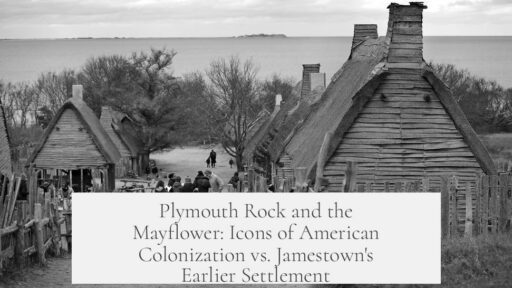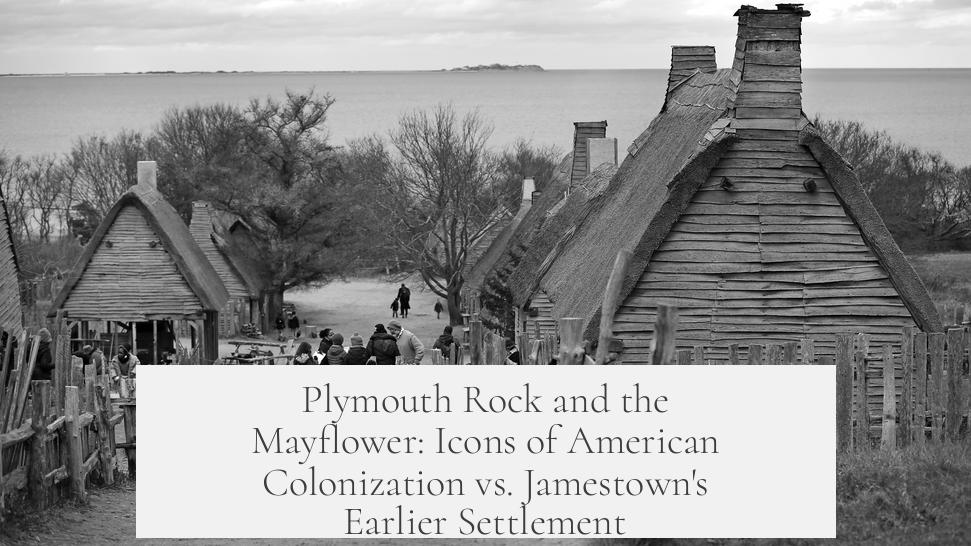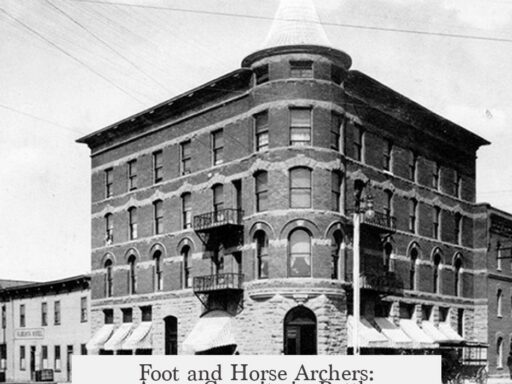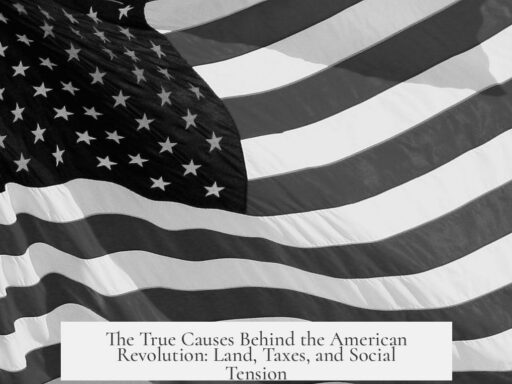Plymouth Rock and the Mayflower hold critical importance in American colonization imagery because they symbolize the founding of a new society based on religious freedom and democratic ideals, contrasting with earlier settlements like Jamestown, which were primarily economic ventures. Their prominence stems from selective memory and national mythmaking that highlights themes aligned with American identity, while overlooking earlier colonies.
Though Jamestown was founded in 1607, fifteen years before Plymouth, it was a commercial enterprise aimed at profit through exploration and extraction of resources. Jamestown’s purpose differentiated it sharply from Plymouth, where the Pilgrims sought religious refuge and the freedom to practice their faith. This contrast has shaped the national narrative and explains why Plymouth, rather than Jamestown, features prominently in American origin stories.
The Mayflower’s voyage and Plymouth Rock represent the birth of what many Americans perceive as their country’s core values. Plymouth embodies the idea of a new beginning, emphasizing religious liberty and communal survival. The Pilgrims’ identity as refugees fleeing persecution fits well with the United States’ later self-image as a sanctuary for religious freedom.
An important factor in Plymouth’s iconic status is its integration into a national origin myth created through selective remembering. Early settlements like Jamestown, Roanoke, and even extensive Spanish and French colonies receive less attention. Scholars describe the Spanish presence in the southeastern United States as the “forgotten centuries,” illustrating how the collective memory selects specific narratives to foster national cohesion.
The Thanksgiving mythology also plays a vital role in elevating Plymouth’s significance. The story of Pilgrims peacefully coexisting and sharing a harvest with the Wampanoag tribe forms a hopeful symbol of harmonious beginnings. Although this narrative oversimplifies and sometimes obscures later conflicts, it endures in American culture as a foundational moment, reinforced by President Abraham Lincoln’s 1863 proclamation establishing Thanksgiving as a national holiday.
This mythology intertwines with the reality that early settlers depended heavily on the knowledge and aid of indigenous people. Figures like Tisquantum (Squanto), who acted as interpreter and guide, were essential to the Pilgrims’ survival. Governor William Bradford described Tisquantum as “a special instrument sent of God.” Such relationships contributed to a peace treaty between the Wampanoag and the colonists, symbolizing the cooperative spirit that the Thanksgiving story highlights.
Modern communities also promote the Plymouth narrative intentionally, boosting tourism and local pride by associating themselves with this foundational myth. Branding efforts emphasize Plymouth Rock as a tangible link to American beginnings, attracting visitors who wish to connect with the country’s origin story.
Jamestown’s history, while older, is less aligned with these themes. It lacked a strong ideological foundation beyond economic gain. Its early years were marked by hardship, violence, and a focus on resource extraction rather than the communal, religious aspirations attributed to Plymouth.
The enduring image of Plymouth Rock and the Mayflower, therefore, transcends historical chronology. It captures the aspirations of a nation’s founding ideals—religious freedom, democracy, and peaceful coexistence—even as those promises remain a work in progress. Plymouth symbolizes a narrative of potential and hope that continues to inspire American identity today.
| Aspect | Plymouth Rock & Mayflower | Jamestown |
|---|---|---|
| Year Established | 1620 | 1607 |
| Primary Purpose | Religious refuge and community | Economic exploitation and profit |
| Symbolism | Religious freedom, beginnings of democracy | Commercial enterprise |
| National Myth | Core of identity, Thanksgiving, peace narrative | Largely overshadowed in popular memory |
Selected forgetting plays a role in national origins. Plymouth Rock and the Mayflower fit a story Americans tell themselves about who they are and where they come from. Other settlements, while historically significant, do not fit this story as seamlessly.
- The Pilgrims’ religious motivations contrast with Jamestown’s commercial goals.
- Thanksgiving mythology contributes to Plymouth’s cultural importance.
- Indigenous assistance was crucial to the Plymouth colony’s survival.
- National branding and tourism promote Plymouth as the symbolic start.
- Abraham Lincoln’s proclamation cemented Thanksgiving as a central tradition.
Plymouth Rock and the Mayflower have become enduring images not because they were the first English settlements, but because they represent a set of values and stories that resonate deeply in American culture. They provide a narrative foundation emphasizing faith, hope, and cooperation that eclipses earlier colonial efforts focusing chiefly on commerce.
Why is Plymouth Rock seen as more important than the earlier Jamestown colony?
Plymouth Rock symbolizes a new beginning rooted in religious freedom, unlike Jamestown, which was mainly a commercial venture. It represents ideals that became central to American identity.
How did the story of the Mayflower shape the idea of American colonization?
The Mayflower’s story highlights the Pilgrims’ quest for religious freedom and peaceful coexistence with Native Americans. This narrative fits well with the country’s values and is taught as a founding myth.
Why is the Thanksgiving story linked to Plymouth and not Jamestown?
Thanksgiving celebrates cooperation and peace between Pilgrims and the Wampanoag. This hopeful event contrasts with Jamestown’s economic focus and harsher relations with natives, making Plymouth’s story more appealing nationally.
Did marketing and tourism influence Plymouth’s importance in history?
Yes, communities have promoted Plymouth and the Mayflower as tourist attractions. This selective memory boosts local pride and draws visitors, reinforcing its image as a national origin site.
How did Native Americans contribute to the survival of Plymouth settlers?
Indigenous leaders like Tisquantum played crucial roles as guides and interpreters. Their help allowed Pilgrims to survive harsh conditions, making Plymouth’s story also one of cooperation.
Is the focus on Plymouth’s story a form of selective memory?
Yes, it highlights ideals like democracy and religious freedom while overlooking earlier colonies and conflicts. This selective telling shapes the national origin myth taught widely today.




